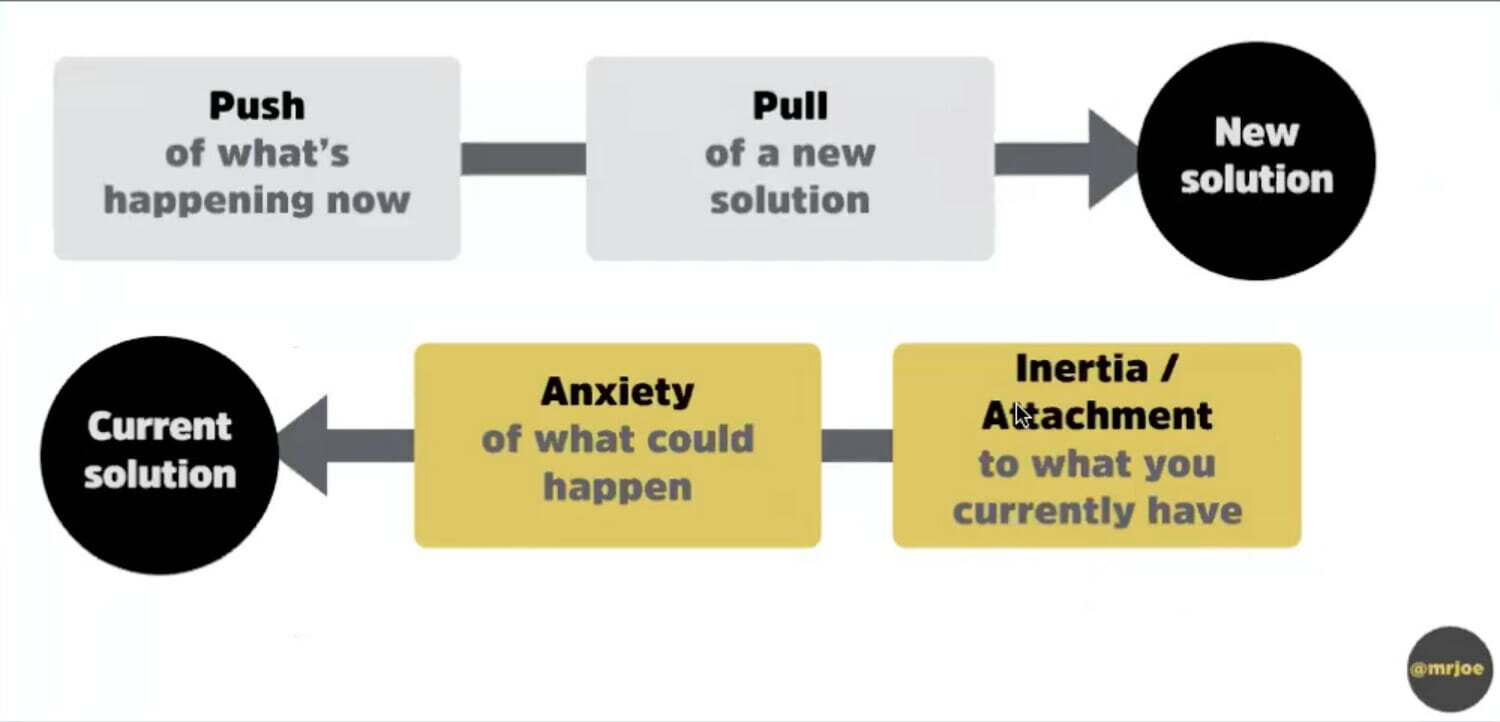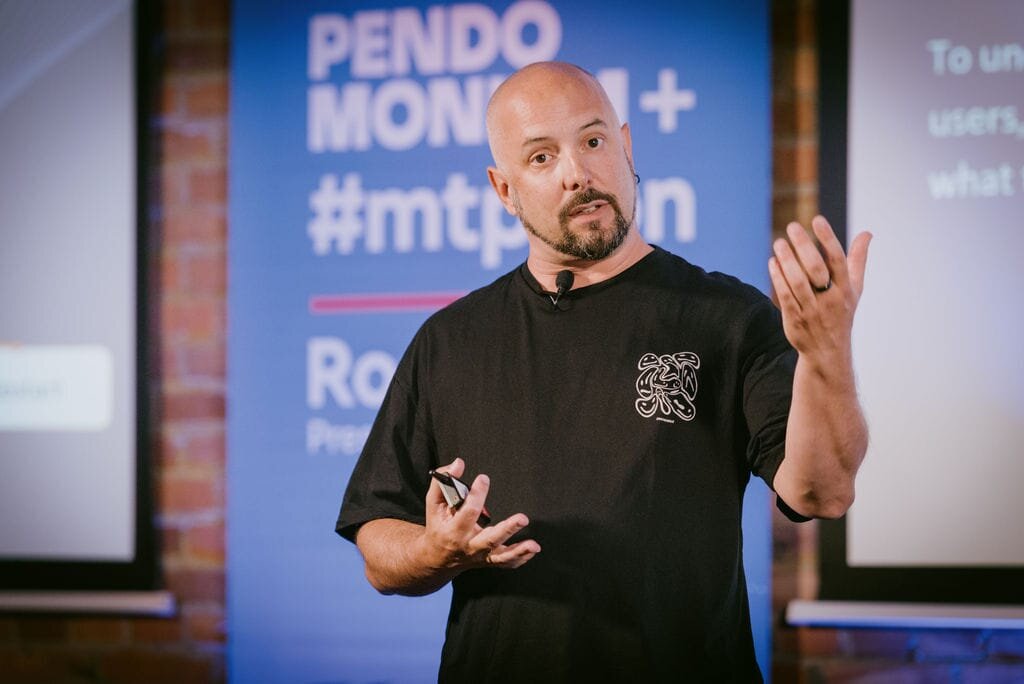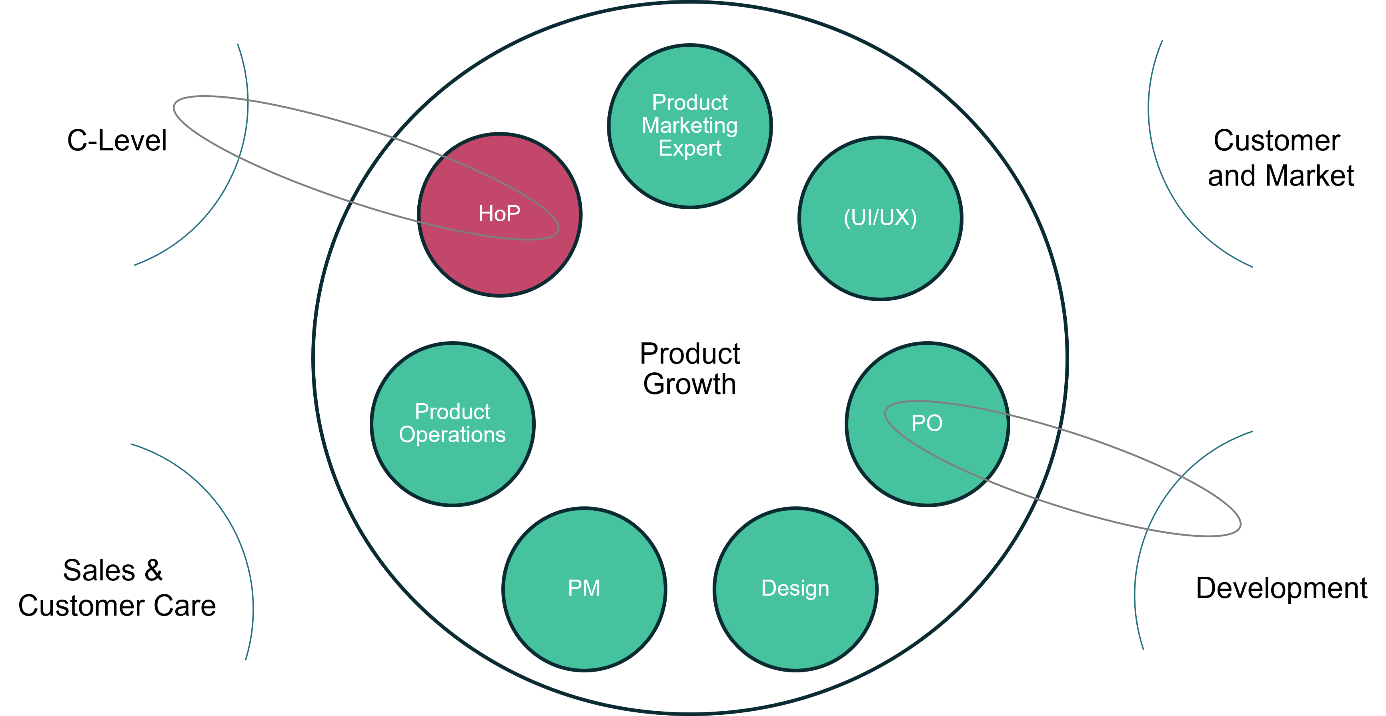Back in 2016, I was working with the product organization of a larger tech company. They asked me to help every product manager on the team “understand the role of the product manager better,” and to help the product managers understand what “better” would actually look like.
This was not an easy challenge and, although I had a certain take on what product managers should be responsible for, I lacked a clear framework—an assessment that I could have discussed with the individual product manager in one of our coaching sessions. I decided it was time to create that framework and this is how I came up with The PMwheel.
In this post, you will learn:
- What the PMWheel is and how it can help you
- How to measure product management activities with the PMwheel
- How to use the PMwheel as a tool for self-assessment
- How to use the PMwheel as a manager
What Is The PMwheel?
The PMwheel has become a reliable compass for people who want to navigate their product career or develop their direct reports. It’s an approach that I have personally used in my work with clients ever since I developed it.
The PMwheel:
- Is a unified framework designed to help product managers understand their roles and responsibilities across a range of activities
- Is a framework that can help them to identify their next best personal and professional development steps
- Knows no boundaries—it can be applied in any product organization, anywhere around the globe
- Works without me being in the room. It can help heads of product foster career conversations with their product managers and make better recruiting decisions.
Here’s how the PMwheel can help you in your own product manager development journey.
The PMwheel will help you if:
- You are managing product people and are searching for a framework that can help you foster career conversations with your product managers and assess your product people in a structured way
- You are a product manager seeking orientation. For example, what should your next personal and professional development step be? This framework will help you figure that out
Measuring Product Management Activities With the PMwheel
For the PMwheel, I decided to come up with my own structure to talk about the things a product manager does, and what they should be capable of. The wheel measures 8 key product management activities, all of which can be assessed and scored.
You can see and download the PMwheel model here.
Let’s take a look at the 8 activities, as illustrated in the following PMwheel graphic:
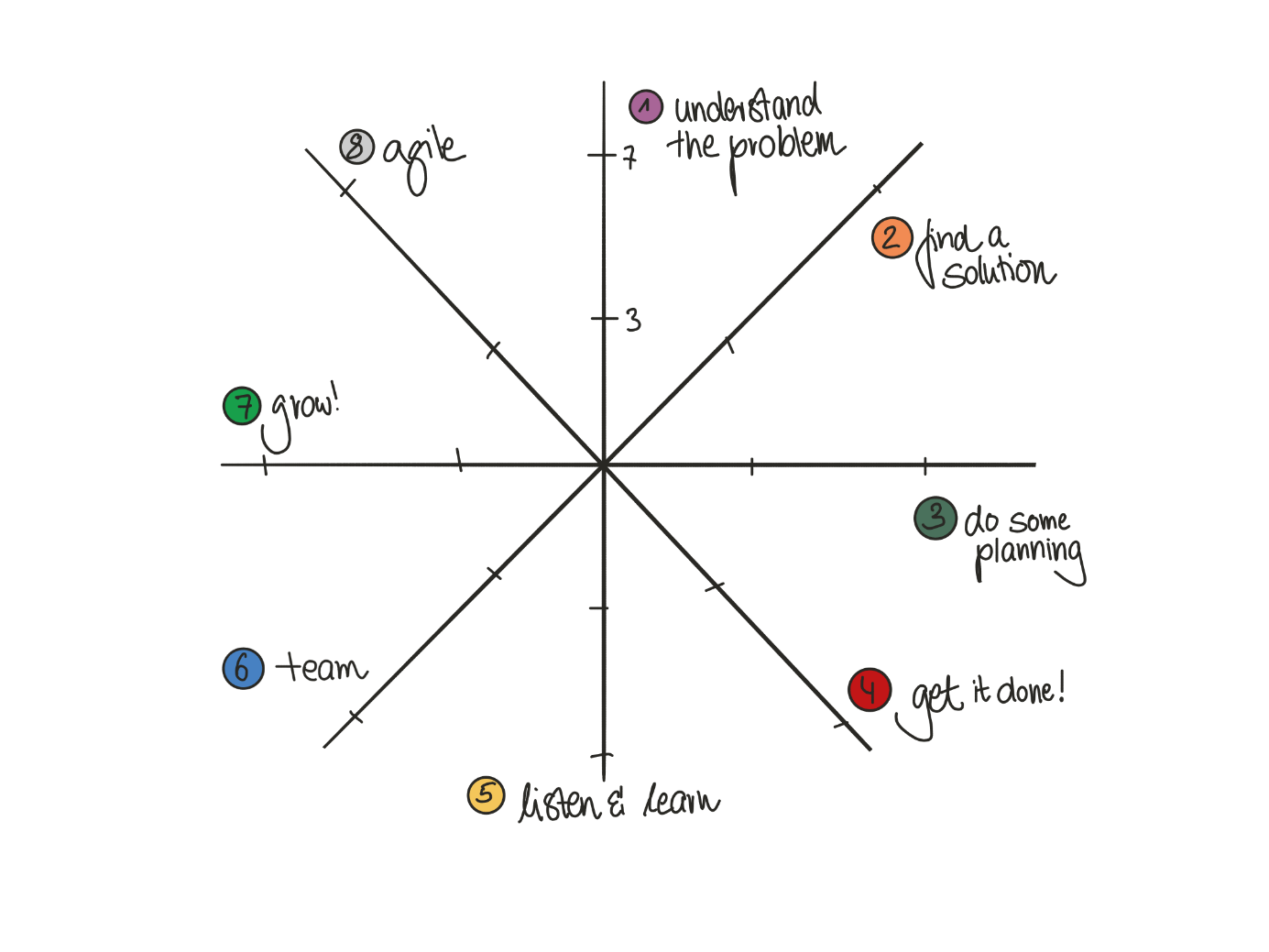
Here's what each of these activities involves (1-5 relate to specific parts of the product-development process, while 6-8 are more general):
- Understand the problem: Is the product manager aware of the underlying user problems of the product they are working on? Do they understand the motives, issues, and beliefs of these people? And have they thought about the needs of the company/organization when it comes to creating this product?
- Find a solution: Did they find some good problems to solve? Great! Can they come up with some possible solutions and experiments for testing them?
- Do some planning: Whether you're a fan of good old roadmaps, or you know the latest Agile planning tricks, a product manager must have a plan and a story to explain what’s next.
- Get it done!: Every product manager needs to know how to work with their product development team to get the product out to the customer.
- Listen & learn: Once the product manager has released something new, they will want to observe if and how people are using it, and to iterate on the learnings to improve the current status.
- Team. How good is the product manager when it comes to teamwork? What do they know about lateral leadership and motivating teams?
- Grow! Is the product manager investing some time in their personal growth as a product person?
- Agile. Is the product manager just living in the Agile world or do they fully understand agile values, principles, and ways of working?
Note: It's important to keep in mind that creating a product is a team sport and so it is NOT the product manager's job to do all of these activities on their own. Instead, they should keep an eye on all of these things, making sure decisions get made and doing whatever is necessary to drive progress.
How To Assess and Score Each Activity
To establish how effectively a product manager is carrying out each of the 8 activities above, and to check their understanding of them, there are a number of guiding questions you or they can ask.
You'll find all of these in the PMwheel download but some quick examples include:
Find a Solution:
- Can they come up with various solution hypotheses and an experiment/test/learning plan for those?
- Can they describe various methods for testing hypotheses (from fake door testing to usability testing, to split testing etc) and what they are for?
Listen & Learn
- Are they constantly measuring the success of their product?
- Are they interested in how people/users/customers are using the product?
- Do they care about product optimization and innovation for their field?
Understand the Problem
- Are they an expert on the existing product?
- Are they able to explain what the target audience is that they are looking into?
- Are they able to stay in the problem space for the time being and are they able to make sure other people do, too?
By asking these questions, you will be able to determine an overall score from 0-7. On this scale, 0 indicates poor knowledge, no skills and low performance while 7 indicates excellence.
How To Use the PMwheel as a Tool for Self-Assessment
To assess yourself using the PMwheel, answer all of the questions for each activity and give yourself a score for each one (you can find all of the questions and a notes section on the download).
Next:
- Do this exercise with your line manager
- Ask 1-3 peers to provide their scores. For this, you can ask whoever you work closely with. This might be your agile coach, designers, developers, data analysts, marketers etc
After you complete this exercise, use all of the scores to create a spiderweb diagram on the PMwheel graphic. You will end up with 1-5 spiderwebs, and together these usually send a pretty clear message.
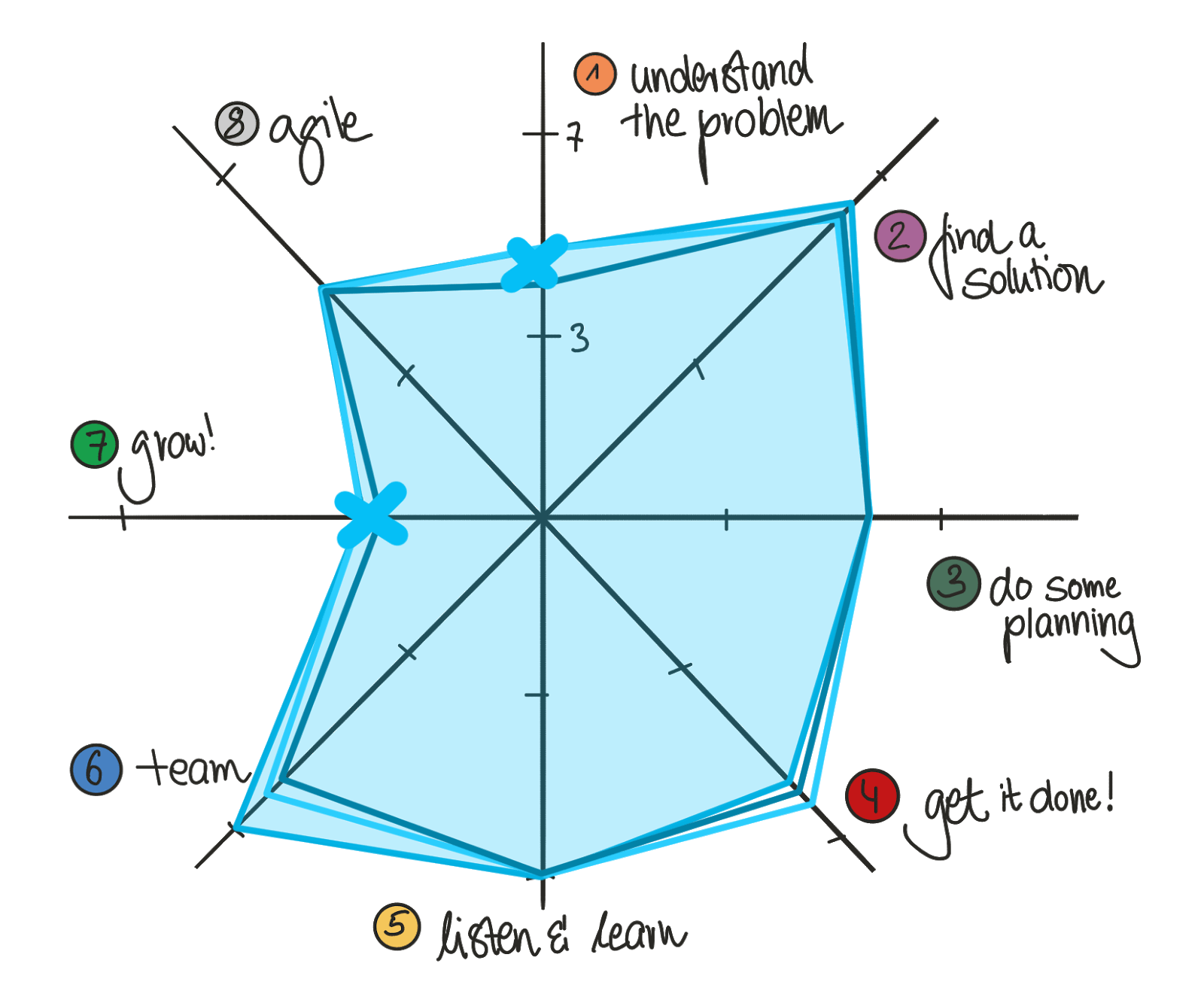
For example, you might see that there are one or two activities that are not rated highly. These are the ones you should focus your time and effort on. In the illustration above, for example, the first area of focus would be 'Grow!'.
To focus your efforts, come up with a development plan—something that helps you to commit to small actions that get you closer to the competent product management personality you want to become. I like to use Gino Wickman’s future-self template (pictured below) from his book Traction.
The future-self framework takes the form of a document that product managers draft and it has four parts:
- As-is: This is the product manager's current situation.
- To-be: This is how the product manager sees themself after they have worked on or gained competency in a particular skill.
- Actions: This is a list of actions that will help the product manager to get closer to their future self.
- Timeframe: This is the number and interval of follow-ups, something like: “May to September, 10 follow-ups, approximately twice a month.”
You can download this super simple framework to give the conversation a definite structure.
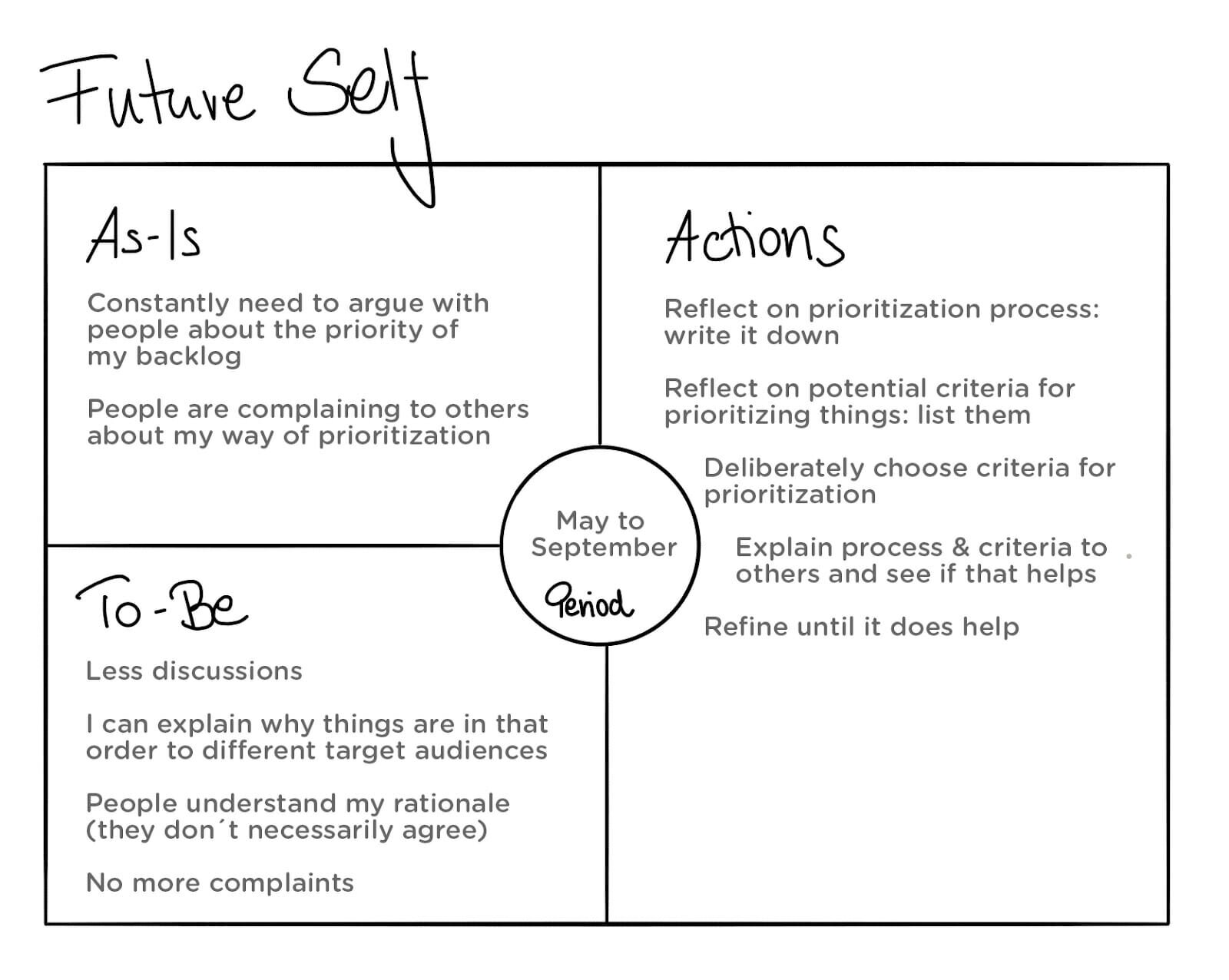
Know the scope of your roleYou might find that not all of the questions in the PMwheel download will be relevant for you or have the same relevance. This depends on your company’s take on product management (empowered product teams vs. order taking feature teams) and on your role description (technical product managers might rate low on the user research bits), but this is fine. Cross out what doesn´t fit your role based on your role description and, if you don't have a role description, create one. You can use my role definition canvas for guidance. |
How To Use the PMwheel as a Manager
For managers, The PMwheel is a simple, but powerful way to assess the responsibilities, skills, and knowhow of your product managers. Keep in mind that no two assessments for your different product managers will be the same—some will be stronger in one area, while others will be stronger in others.
For managers, the process involves 2 stages:
- The initial assessment
- The collaborative assessment meeting
The Initial Assessment
To conduct the initial assessment, you’ll rate your product manager(s) on each activity on a scale of 0-7. For example:
- If your product manager has absolutely nothing to offer their score would be 0
- If they are delivering above and beyond their score would be 7
Use those scores to create a spiderweb diagram like this:
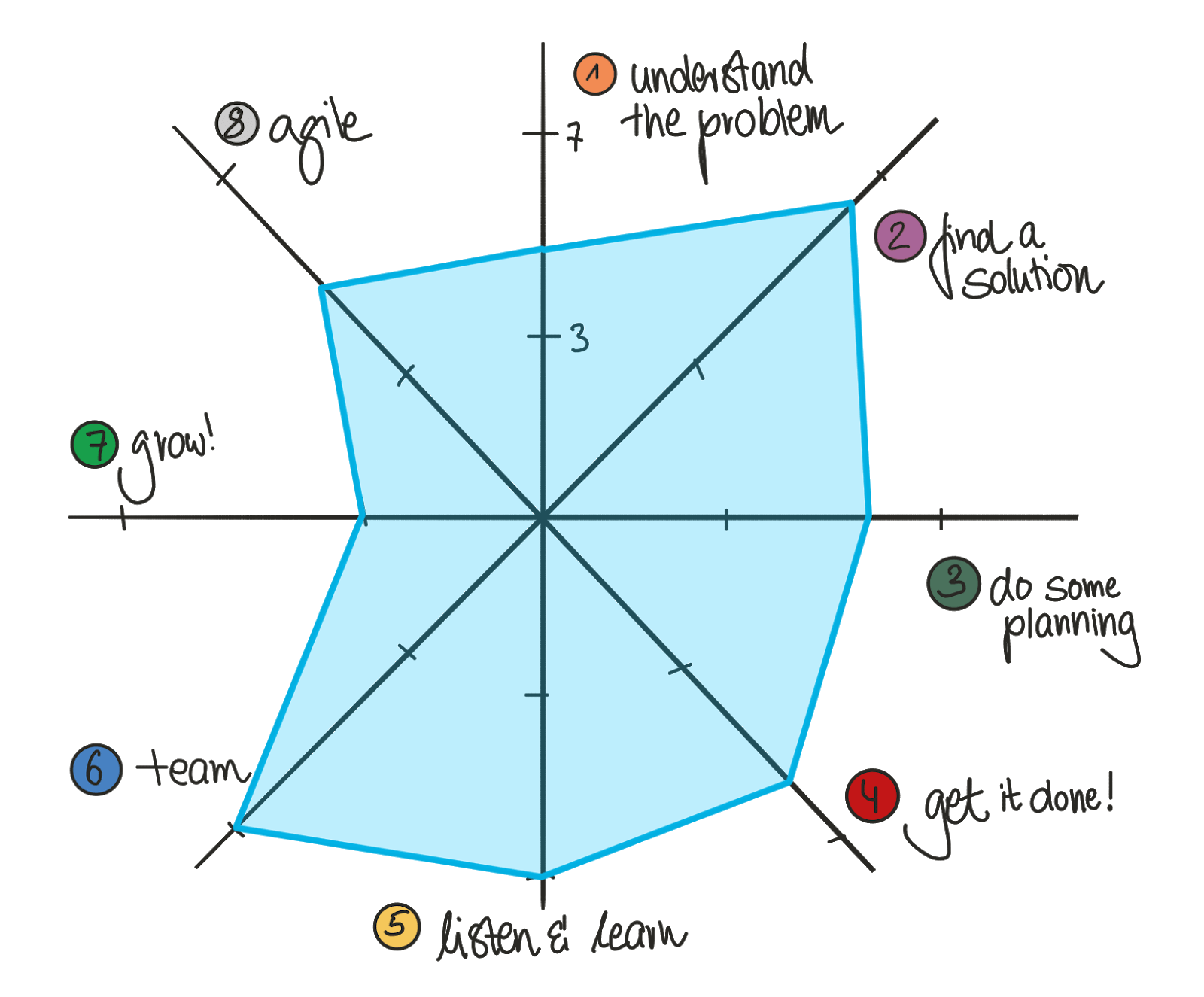
Using the PMwheel across teamsIf you are assessing more than one product manager on your team, it's important to look at the entire team again once you have assessed them all. You might find you need to make some adjustments in your scores. E.g. are all of those who got a 6 in "do some planning" similarly good? If not, adjust their scores accordingly. |
The Collaborative Assessment Meeting
With your initial assessment complete, it's time to involve your product manager. To do this, invite them to a collaborative assessment session (allow 90 minutes for this) and follow these steps:
- Explain the framework: Use the steps outlined here to prepare your product manager for the session and explain how the session is designed to foster career conversations in a positive and structured way.
- Ask them to rate themselves on the 8 activities in the PMwheel: To help them with this part of the process, talk with them about each of the activities, highlighting different aspects using the example questions and then give them 2-3 minutes to read some more questions and rate themselves. It's useful to note here that it's less important to have a precise score and more about their initial gut feeling. The more you use the PMwheel over time, the easier this exercise will get.
- Present the scores from your assessment: Explain why you arrived at the scores you have and don’t just highlight the shortfalls—be sure to let them know where you think they are already doing a great job.
- Identify one area of improvement in this first session: You want them to succeed so choose something small, that's going to be easy to learn or to change.
- Encourage feedback (even pushback) on your approach: If you find you're scoring them a 5 on something that they score themselves a 7, it's ok to discuss it. They might have good reasons and great examples for their score that will encourage you to change your score. In other cases, it's ok if you agree to disagree. If you think they need to get better in certain aspects, but they think they're already nailing it this becomes a great topic to follow up on in a future 1:1.
- Ask them to create their personal development plan: Again, I like to use the future-self template from the book Traction by Gino Wickman for this. See my short example below. If this style works for you/your product manager, you can download the future-self template here.
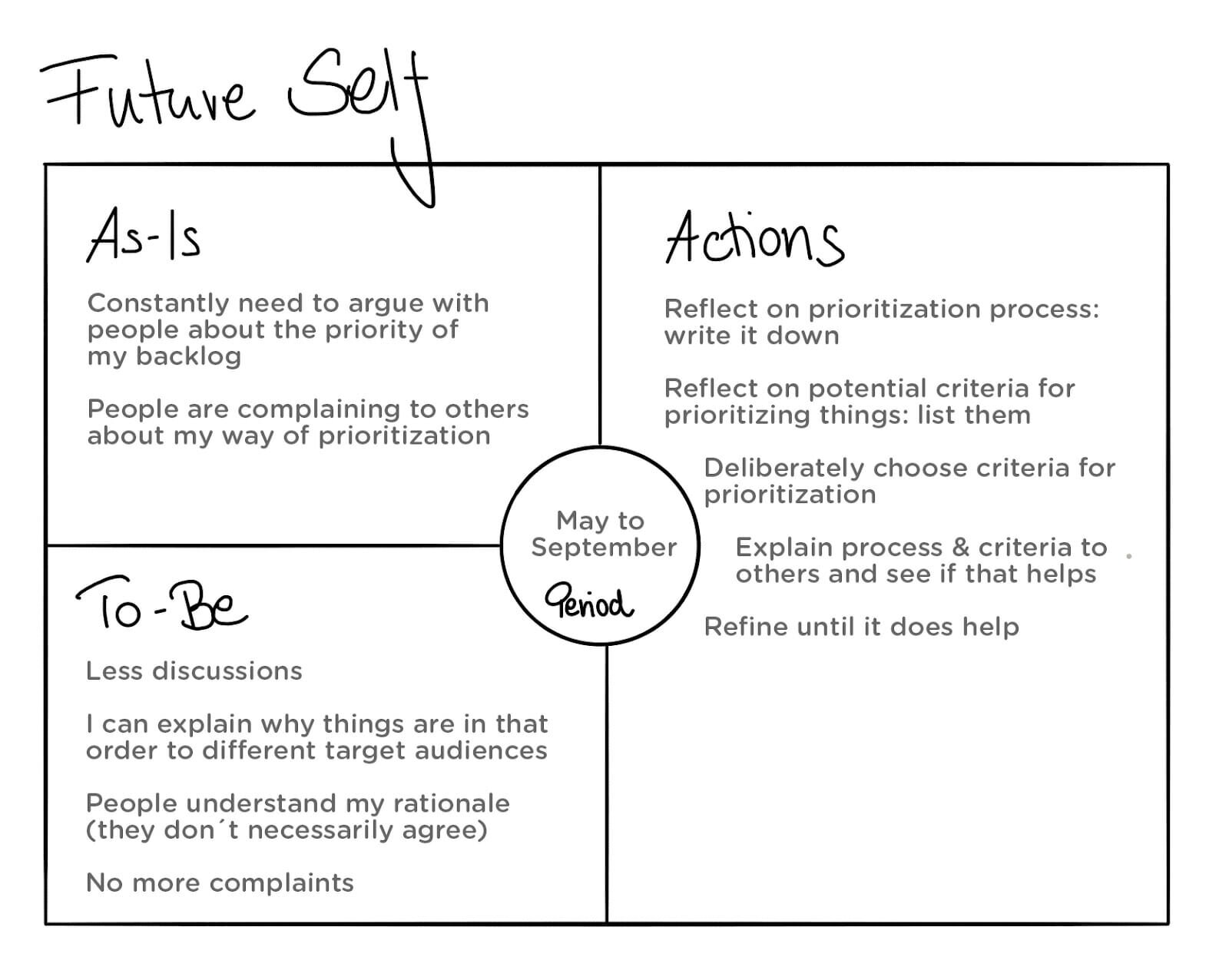
Set a date to follow up
With all of the above steps complete, set a date to follow up on the development plan action items so that you can continue moving forward. Ask your product manager how often they would like to have follow-up discussions – as a guide, some of my clients use it in every 1:1 as a framework for their conversations. Others use it 3-4 times a year. This really depends on your product manager and what they feel will be most beneficial. The main thing is to ensure you get the first follow-up date scheduled in this meeting to maintain momentum.
Give the PMwheel a Try!
The PMwheel is a remarkably useful tool for heads of product, product managers, and other product people.
Whether you're a manager looking for a way to refresh the career conversations you have with your direct reports or a practising product manager who's keen to evaluate their own skills, the PMwheel will help you to better understand the product manager's role and responsibilities, and create clear pathways for personal and professional development.
Over the course of the last four years, I have been using the PMwheel in my coaching in a wide variety of companies including startups, scale-ups, and corporates, and in many cases, it's also been helpful when used for hiring, onboarding, and for people development purposes.
If you have used it and want to share your feedback please don't hesitate. Share your thoughts in the comments below or get in touch with me directly, I would love to hear about your experiences!


